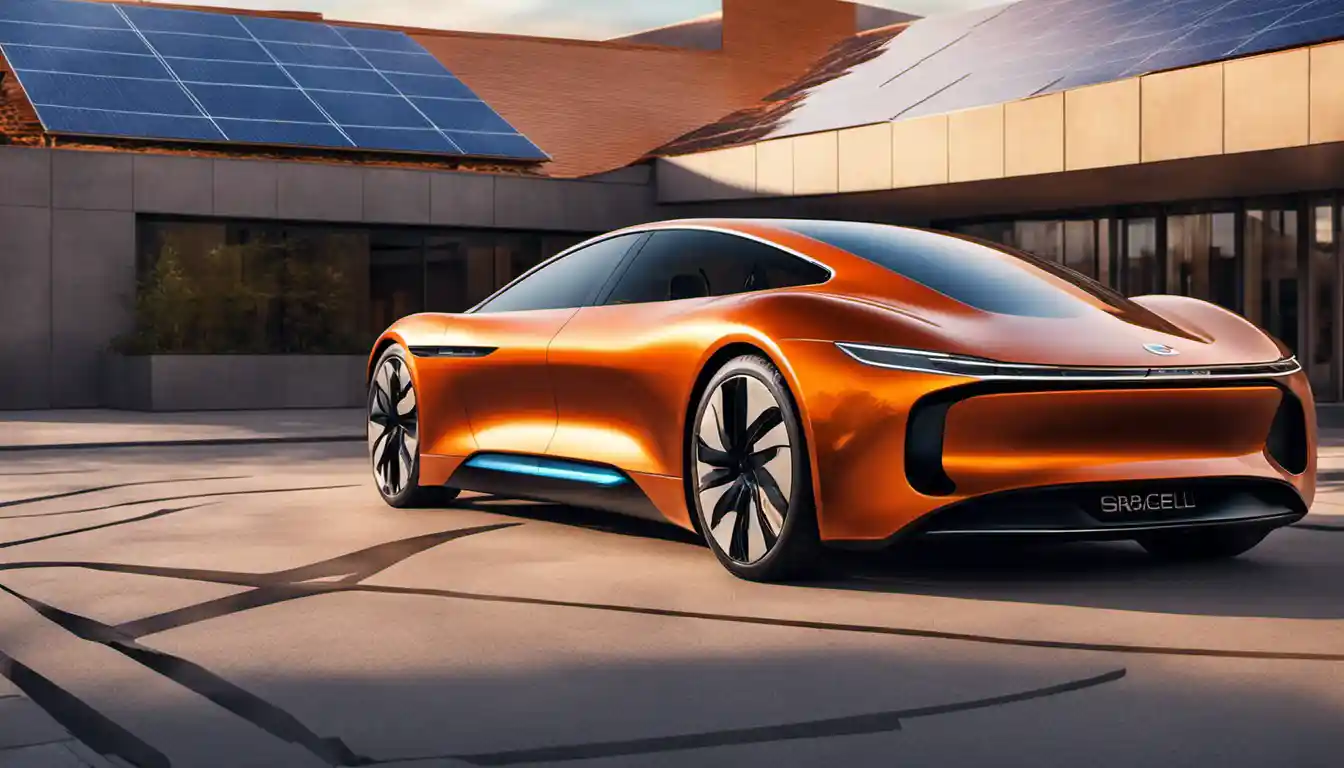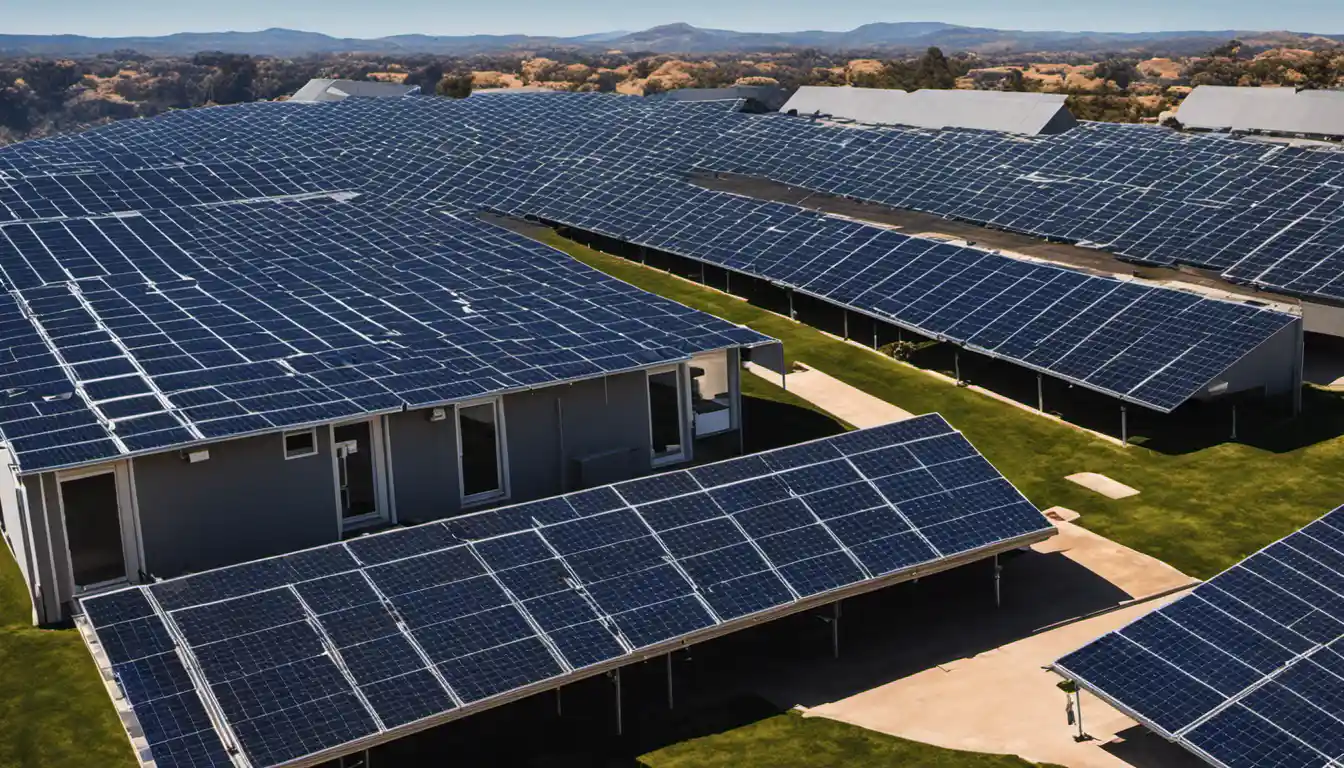Understanding The Basics of Solar Panels and Electric Vehicle (EV) Charging
The number of solar panels needed to charge an electric car can vary based on factors such as the specific model of the car and the wattage of your solar panels. On average, a solar panel with 250-300W capacity could theoretically charge an electric vehicle in somewhere around 8 hours. For more precise calculations, you would need to look at the car’s battery capacity and the solar panel’s energy output.
Fundamentals of EV Charging
You can charge an electric car using a standard home outlet, a specialized home charging station, or a commercial charging station. Regardless of their source, all of these methods essentially serve the same function: they convert AC voltage to DC voltage, which the car’s battery can store. If you’re curious about how this conversion takes place, we suggest reading up in our comprehensive guide on solar-powered vehicles.
How Does Solar Power Work?
Solar power works by allowing particles of light, or photons, to knock electrons free from atoms, generating a flow of electricity. Solar panels are made of many smaller units called photovoltaic cells (which is where the “photo-” comes from), linking together to create a substantial source of power.
Connecting Solar Panels and EV Charging: The Concept
Solar panels for EV charging work on the same principle. In place of a conventional power source, you would instead draw energy from the solar panels that have converted sunlight into useable power for your car’s battery. This process allows the car to store energy throughout the day, just like at a traditional plug-in station. The number of panels required to keep your car charged will depend on the daily mileage, as well as the efficiency and capacity of both the solar panels and the car’s battery.
Energy Requirements for Charging an Electric Vehicle
There isn’t a one-size-fits-all answer to the question “how many solar panels to power a car“. It greatly depends on the size of your vehicle’s battery and the efficiency of your solar panels.
Determining Factors for EV Energy Consumption

The battery size of your electric vehicle determines the car’s energy consumption. Bigger batteries equate to more capacity and thus a longer driving range. However, they will also require more solar power to charge completely.
Average Energy Consumption of Popular EV Models
As an example, the Tesla Model S has a 100 kWh battery, and the Nissan Leaf comes with a 40 kWh battery. If you were using a standard 250W panel, the Tesla would require somewhere around 40 hours of ideal sunlight conditions to fully charge, while the Leaf would need around 16 hours.
The Role of Solar Panels in EV Charging
The primary role of solar panels in EV charging is to collect solar energy, convert it into electrical energy, and then store it in an electric vehicle’s battery.
Need for Solar Panels in EV Charging
There are several reasons why you might choose solar panels for your EV charging needs. Solar panels are perfect if you’re looking for a greener, more renewable way to power your vehicle. Not to mention, solar power can help you reduce your electricity expenses in the long term.
Impact of Solar Energy on EV Charging
Solar energy brings efficiency to EV charging. It supports a self-sufficient charging system and reduces the load on your home or national grid. Plus, it produces zero emissions and is a true environmental winner!
How Many Solar Panels Needed for Charging an Electric Vehicle
So, “how many solar panels to charge an electric car“? Well, not that many, in fact.
Factors Determining Number of Solar Panels

Say you drive about 30 miles per day, for example. An EV typically needs around 30 kWh of electricity for every 100 miles, so you end up using about 10 kWh per day. If you have a standard 250W panel installed, you’ll need around 6 to 8 hours of peak sunlight to get those 10 kWh. Therefore, under perfect conditions, one panel could potentially be sufficient. But as we know, weather can be unpredictable, so it’s safer to have multiple panels installed to meet your needs.
Typical Scenarios and Number of Required Solar Panels
Even for a larger EV like a Tesla Model S, if you live in a sunny area, even three to four high-efficiency panels may sufficiently cover your daily driving distances.
The Economics of Using Solar Panels for EV Charging
Cost Comparison: Solar EV Charging versus Other Methods
Over the long term, charging your electric vehicle with solar power can be a lot cheaper than relying on the grid. The upfront cost might be significant, with the panels and installation, but the ongoing running costs are extremely low.
Potential Savings and Break-Even Point
Assuming average electricity and gas prices, you could end up saving thousands over the lifetime of your EV by charging with solar power. Not to mention the potential return on investment from even selling back excess electricity to the grid!
Planning for Future EV Charging Needs with Solar Power

Scope for Expansion: Adding More Solar Panels
The beauty of solar power is that you can always add more panels as your energy needs grow. Plan accordingly and leave space for potential expansion!
Future Trends and Impact on Solar EV Charging
As electric vehicles become more mainstream and the demand for renewable energy increases, solar EV charging is set to become even more common. Plus, improvements in technology suggest that solar panels will only get more efficient over time.
Utilizing Tax Credits and Incentives for Solar EV Charging Solution
Federal and State Incentives for Solar Power
Both the federal government and various state governments offer generous tax credits for installing solar panels. Make sure to look into the potential savings!
Muskogee’s Tax Credits For Electric Vehicles and Solar Power
Each of these incentives plays a crucial role in offsetting the initial investment while increasing the total savings over time. It proves that solar power is a fantastic green comrade for EV owners, bringing more than just environmental perks to the table.
Cheers to embracing a sunny ride, literally! For more insights and tips related to solar energy and electric vehicles, stay tuned to our blog. And remember, being part of the clean energy revolution is about more than just responsible living – it’s also about enjoying the ride.



